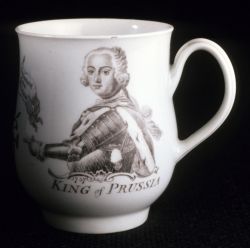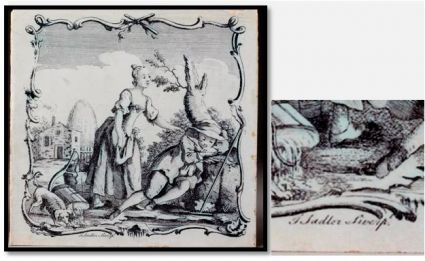Origins of Printing on Ceramics
|
Transfer printing is a particularly English form of ceramic decoration. Although printing on paper existed for centuries, it was the enterprising English engraver and printer who saw its potential as a means of decorating the hard, shiny surface of pots. It is not possible to credit one individual with the sudden flash of inspiration that led to transfer printing on pottery. Rather, there seems to have been a general interest in expanding the use of printing techniques and adapting them to produce a wider range of decorative processes in the nation's growing industries. In the 1750s three men made significant advances in the application of printed decoration to ceramic surfaces. In 1751 John Brooks, a Birmingham engraver, petitioned for a patent for “printing, impressing, and reversing upon enamel and china from engraved , etched and mezzotinted plates and from cuttings on wood and mettle...” He was primarily concerned with printed decoration on enamels – boxes, plaques, medallions, etc. His patent application failed and he moved from Birmingham to London where he continued to unsuccessfully apply for patents. He was likely involved in early printing on enamels at both Bilston--near Birmingham--and at Battersea in London. Credit for perfecting transfer printing on porcelain at the Worcester factory in the 1750s goes to Robert Hancock, an eminent etcher and engraver. Richard and Josiah Holdship, the managers of Worcester, were very supportive and involved with Hancock’s work. By the mid 1750s the Worcester porcelain factory was producing both underglaze prints in blue and overglaze prints, predominately in black. Five years after Brooks's first patent attempt, in 1756, John Sadler (in partnership with Guy Green) claimed in a patent affidavit that they had spent the past seven years perfecting a process for printing on tiles and that they could "print upwards of Twelve hundred Earthen Ware Tiles of different patterns " within a period of 6 hours. Sadler and Green printed in Liverpool, where their trade included overglaze printing on tin-glazed earthenware, porcelain, and creamware. From these confused beginnings in the middle of the 18th century, printing evolved in a number of directions.
|
|




